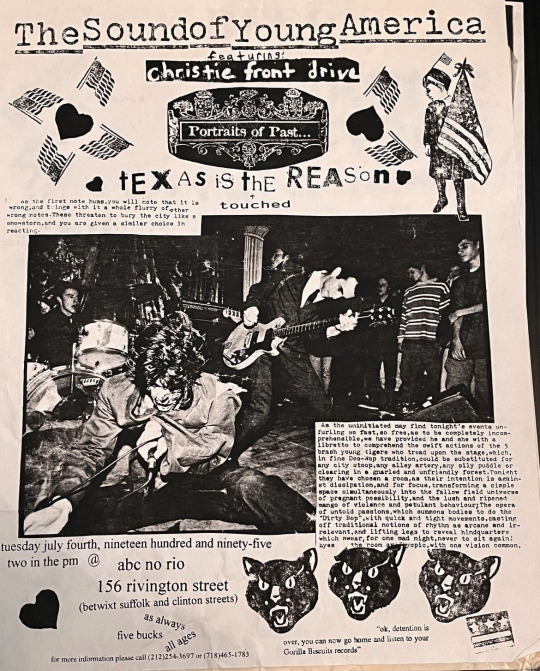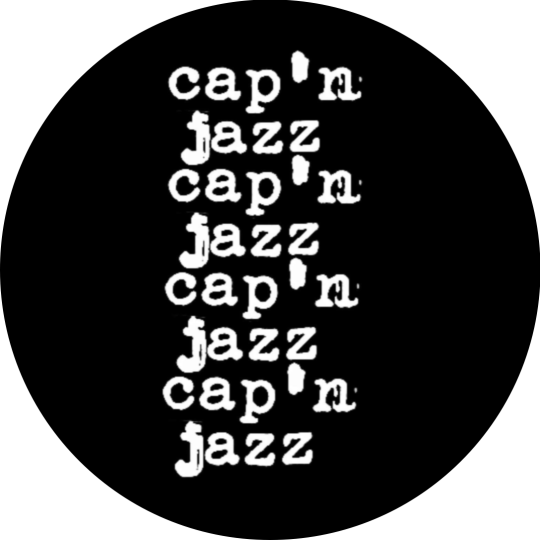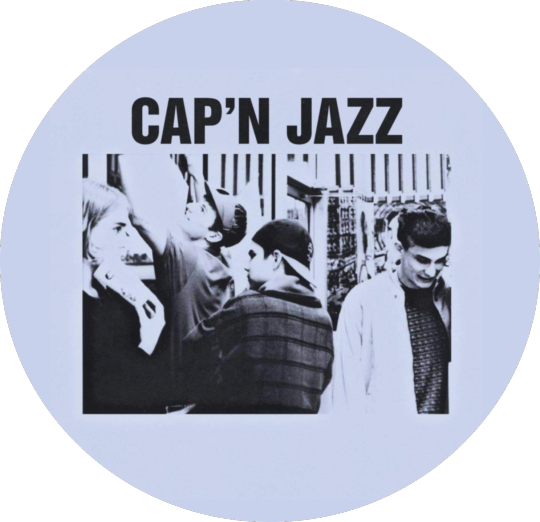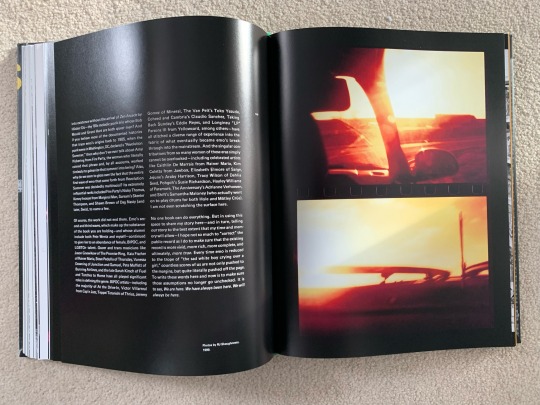#texas is the reason
Explore tagged Tumblr posts
Text
you can take a boy out of midwest emo but you can’t take the midwest emo out of a boy
#midwest emo#loser#modern baseball#american football#sunny day real estate#the front bottoms#mom jeans#title fight#marietta#cap n jazz#hot mulligan#twiabp#camping in alaska#texas is the reason#free throw#worst party ever#brave bird#tiny moving parts#brave little abacus#michael cera palin#everyone asked about you#empire! empire! (i was a lonely estate)#the get up kids#braid#the promise ring#algernon cadwallader#a great big pile of leaves#football etc#the hotelier#etc
111 notes
·
View notes
Text


18 notes
·
View notes
Text

Texas Is The Reason-Blue Boy
Split single with The Promise Ring
Released by Jade Tree Records in Wilmington,DE
22 notes
·
View notes
Text

THE SOUND OF YOUNG AMERICA
#emo#emotive hardcore#emotional hardcore#emocore#skramz#screamo#real emo#midwest emo#90s emo#christie front drive#portraits of past#texas is the reason#touched band
216 notes
·
View notes
Text








#pins#capn jazz#pins and patches#the saddest landscape#buttons#the get up kids#saetia#foxtails#capnjazz#diy#skramz#midwest emo#orchid#jeromes dream#orchidband#thursday#texas is the reason#rites of spring#pinback button#pin badge#chaosisme#Spotify
130 notes
·
View notes
Text

#riot fest#gig flyer#blink 182#weezer#Green Day#alkaline trio#knocked loose#jawbreaker#dropkick murphys#bad religion#the front bottoms#the academy is…#Texas is the reason#knuckle puck#the wonder years#the bouncing souls#screeching weasel#citizen#senses fail#free throw#helmet#buzzcocks#touche amore#militaire gun#agnostic front#h20#agent Orange#samiam#microwave#the Linda Linda’s
3 notes
·
View notes
Video
youtube
Texas is the Reason - Dressing Cold
3 notes
·
View notes
Text
My Top 6 emo bands!
Against all odds, emo is still a thing, in a kind of nostalgic way, but a thing nonetheless! Let's get a thing straight first: emo is not the same as pop punk. While bands like All Time Low and Yellowcard fall into the spectrum, others like Blink-182 do not (unless we count their 2003 self-titled album, especially Here's Your Letter which even has traces of post hardcore in it). Anyway, I was bored and decided to have my very own Buzzfeed Meets Watchmojo moment. No hate, please and thank you (also, I'm tagging the phandom because I really want to know their opinion).
Here goes nothing:
6. My Chemical Romance

I'm respecting their dislike of the emo label by placing them at the bottom, but asserting my authority as their fan by putting them on the list anyway. Besides, there's a difference between emo as a genre and emo as a subculture. Bullets and Three Cheers? They fall into the genre. I won't say anything about the looks, though, they speak for themselves. Their evolution from post hardcore to pop punk to their own style in later albums has made them icons, not to mention their masterpiece The Black Parade (2006). If I had to pick one song, I'd pick Demolition Lovers.
5. Thursday

Criminally underrated. Blending perfect melodic verses, screamo and powerful riffs, they've made a name for themselves in the post hardcore scene. Their sense of rhythm is something that has set them apart from others, as well as them not shying away from controversial topics (like M. Shepard being my very own LGBTQ+ anthem, representing their disgust at the awful crime that inspired the song). Also, as trivia, vocalist Geoff Rickly produced MCR's first album and even provided backing vocals on This Is The Best Day Ever! (Gerard Way would do the same on Jet Black New Year the same year). Anyway, melodic verses, screamo and riffs, here's my favourite song: Concealer!
4. Sunny Day Real Estate

They simply belong on this list, that's how big their influence on emo has been. Pioneers of the genre, their music, particularly their debut Diary (1994), inspired many bands that followed, becoming an example of how the emo genre should sound and feel: tough, yet sensitive. (Also, see some familiar faces? Hint: after their first break-up, they went to be a part of the Foo Fighters first lineup!). The drums and bass (hint, hint!) on each song went steady but firm, while the guitars were in charge of the melody, and the result was something that took you to Heaven, all the way down to Hell and back to Earth. Take for example one of their best known songs: In Circles.
3. Texas Is The Reason

Few bands can say they made it after just one album and an EP, and that's exactly what this band did. Guitarist Norman Brannon felt that way after the last show of their tour in Europe saw the crowd singing their songs, something big for a foreign underground band like they were during the 90s. Their sound was even more expanding, including indie rock into it, creating something unique and lasting, like their only album's opener Johnny On The Spot.
2. Silverstein

Um, the songwriter that is Shane Told? The image? The screams? This band had it all and they used it flawlessly, with phenomenal albums being released one after the other, and memorable songs going from punk rock to post-hardcore that went straight to the heart, showing passion and feeling, like the absolute banger Red Light Pledge.
1. Jimmy Eat World

Yes, everybody has heard The Middle and Pain, but this band is so much more than those singles, and I will die on that hill. An example of resilience and musicianship, they had an evolution from the skate punk (their ignored debut album) that was fashionable at the time, to post hardcore (the amazing Static Prevails) to a rock sound that can only be defined as true emo. Fittingly, they have released what is, in my opinion, the greatest emo album of all time: Clarity (1999), unfairly overlooked by its contemporary critics, and now getting justice by gathering a cult following. Don't believe me? I give you Just Watch The Fireworks.
#all opinions are mine and mine alone#no discourse#thursday band#texas is the reason#my chemical romance#sunny day real estate#silverstein#jimmy eat world#emo#post hardcore#dan and phil#dnp
7 notes
·
View notes
Text
Happy National Emo Day. I'm a dumbass bastard

#national emo day#algernon cadwallader#sunny day real estate#texas is the reason#boys life#empire! empire! (i was a lonely estate)#the promise ring#cap'n jazz#american football#the get up kids#midwest emo
32 notes
·
View notes
Text

my favorite albums <3
5 notes
·
View notes
Text
On this day, June 13, in Type O Negative history:
The video for "Christian Woman" receives airplay on the Metal Masters (Tampa, FL) TV cable access program (1994)
Type O Negative play the Coca-Cola Starplex Amphitheatre in Dallas, TX (1995)
Type O Negative play the Utica Memorial Auditorium in Utica, NY (1997)
Type O Negative play CBGB in New York, NY (2003)
Type O Negative play Lucerna Music Bar in Prague, Czechia (2007)
Type O Negative play Pop's with 3 Inches of Blood in Sauget, IL (2008)
#type o negative#peter steele#josh silver#kenny hickey#johnny kelly#heavy metal#goth#gothadelic#roadrunner records#spv#steamhammer#bloody kisses#october rust#world coming down#dead again#christian woman#cbgb#new york#3 inches of blood#texas is the reason#prague orloj#sal abruscato#vinland
8 notes
·
View notes
Text



not surprised!
#music#mcr#fall out boy#the magnus archives#taking back sunday#bmth#bring me the horizon#ptv#pierce the veil#jawbreaker#the get up kids#texas is the reason
3 notes
·
View notes
Text

#top 7 albums#weekly#the brave little abacus#texas is the reason#ruins#fred thomas#pharmakon#cursive#don caballero
2 notes
·
View notes
Text


Norman Brannon’s essay from Negatives by Amy Fleisher Madden
Text below
By the time I moved back to New York after a three-year stint in Oakland in 2004, the gap between what we now call second and third wave emo had become truly pronounced. Texas Is the Reason -the band whose name will be seemingly affixed to mine forever-had only disbanded seven years earlier, but it was already clear that a curious mystique around who we were had developed in the interim.
The reason for this is obvious now: Our entire two-and-a-half-year existence completely predated the social internet. Which is to say that if you wanted to be a Texas Is the Reason fan in 2004, your primary source of research wasn't going to be Google, YouTube, or Wikipedia. It was going to be the physical records we released, whatever blurry (and often black-and-white) band photos we used for album artwork or press, the few dozen interviews we did for out-of-print fanzines, or maybe, if you were lucky, a fuzzy VHS concert tape transferred to DVD.
We had no choice but to be "enigmatic."
Of course, we, as humans, almost instinctively hate ambiguity. And our steadfast refusal to live with ambiguity, to truly accept it, more often than not compels us to fill in the blanks, to make up our own stories, to draw our own pictures. Some of these pictures may be "true enough." But many of the ideas we generate in the pursuit and creation of "knowing" often contain significant details that derive from the shared assumptions of a frequently centered majority. They reflect our stubborn insistence that the things we feel most connected with somehow must resemble a dominant, and there-fore, familiar image.
So I bring up 2004 because of the time I met a younger Texas Is the Reason fan through some mutual friends during that cross-country move, And I bring up the "mystique around who we were" because that random introduction actually marked the first time l'd ever considered that younger fans
of the band during that time might have no idea what we looked like. And I mention "the shared assumptions of a frequently centered majority" because a few days after that meeting, I was directed to this younger fan's Live Journal, Where, after writing up an otherwise pleasant recap of our lunch, the young man concluded, apropos of literally nothing: "I never knew Norm wasn't Caucasian.
It was kind of a shock."
"Quick-close your eyes and tell me about the first person you see when you imagine a 'punk.'
Are they Black? Queer? Female?
Gender-nonconforming?"
Before you judge, quick-close your eyes and tell me about the first person you see when you imagine a "punk." Are they Black? Queer? Female?
Gender-nonconforming? Or are they white, male, and cisgender? Don't feel bad. We all know how this exercise typically ends.
Which is why I can truly say I was not at all mad when I read my new friend's LiveJournal entry.
If anything, those two sentences, which had been composed with such matter-of-fact clarity, were something of an awakening to me. They showed me how seemingly innocuous (and yet ever-insidious) our assumptions of whiteness can be. Despite having played in hardcore bands for over ten years by that point, I was really only just beginning to wres tle with my life as a musician who is also a queer person of color, struggling to define myself outside of whiteness. And maybe for the first time, it occurred to me that in my misguided need to fulfill the more socially noble role of being "a musician who just happens to be gay and Latino"-as opposed to being a proud gay and Latino musician-/ was actively playing a part in my own erasure. Without knowing it, my new friend had simply highlighted a fact about the way in which unchecked assumptions often go on to become indelible parts of our cultural memory-and how that same cultural memory, once established, is then paradoxically deployed as "proof" for those earlier unchecked assumptions. How else could my brown skin be
"a shock" to anyone if not for a completely whitewashed conception of what emo (or hardcore, for that matter) looks like? Knowing this has changed literally everything about the way I navigate my identity in the public sphere.
But that was then and this is now, right? Surely the modern power of Google has eased our ambiguity blues!
"And if you believe most of the documented histories that trace emo's origins back to 1985, when the punk scene in Washington, DC, declared a 'Revolution Summer,' then why don't we ever talk about Amy Pickering from Fire Party?"
I want to tell you that so much has changed, and if it weren't for a Buzzfeed headline from June of
2020-published a full sixteen years after that Live Journal entry-maybe I could. Because when I read "Pete Wentz Is Trending on Twitter Because Many People Are Just Finding Out He's Biracial," my past suddenly became prologue.
It was kind of a shock.
Whatever rationale I used to dismiss the general lack of knowledge about Texas Is the Reason in 2004 simply did not apply to Fall Out Boy in 2020.
By then, we had already lived with fifteen years of Pete Wentz's face being plastered all over print and digital media. His band had been packing arenas and stadiums all over the world. Their music videos were ever-reliable multimillion streamers for YouTube. In fact, Fall Out Boy's undying success is perhaps one of the reasons why a book like the one you are holding is able to exist. And yet our assumptions of whiteness are still so embedded in the cultural psyche that, when it came to Wentz's experience as a biracial man, we saw people actu ally refusing to believe their own eyes and ears.
The idea of punk and emo as a white-dominant space had become so entrenched in our imaginations that a simple confirmation of one man's Blackness was enough to send Twitter into a frenzy.
I get it, Pete.
That's why, when I was asked to write something for this book, I knew almost right away that I would have to make a point about emo that most visual histories documenting this scene-and the wider punk and hardcore communities that came before it-have failed to properly capture from a collection of images alone. Because while a majority of the most popular and recognizable voices in emo and post-hardcore do in fact belong to straight, cis-gender, white men, there is and always has been a plurality of invaluable contributions to this scene from women, BIPOC, and LGBTQ+ folks. And far too often, many of these sometimes groundbreaking pioneers have been unfairly sidelined, if not redacted from the historical record.
When it comes to emo's origin story, for example, there are valid questions we need to be asking.
For one thing, could emo have even been called into existence without the arrival of Zen Arcade by Hüsker Du - the 80s melodic punk trio whose Bob Mould and Grant Hart are both queer men? And if you believe most of the documented histories that trace emo's origins back to 1985, when the punk scene in Washington, DC, declared a "Revolution Summer," then why don't we ever talk about Amy Pickering from Fire Party, the woman who literally coined that phrase and, by all accounts, worked tirelessly to galvanize that summer into being? Also, why do we seem to gloss over the fact that the entire first wave of emo that came forth from Revolution Summer was decidedly multiracial? Its extremely influential ranks included Fire Party's Nicky Thomas, Kenny Inouye from Marginal Man, Scream's Skeeter Thompson, and Shawn Brown of Dag Nasty (and later, Swiz), to name a few.
Of course, the work did not end there. Emo's second and third waves, which make up the substance of the book you are holding - and whose alumni include both Pete Wentz and myself-continued to give rise to an abundance of female, BIPOC, and LGBTO+ talent. Queer and trans musicians like Jason Gnewikow of The Promise Ring, Kaia Fischer of Rainer Maria, Steve Pedulla of Thursday, Vanessa Downing of Junction and Samuel, Pete Moffett of Burning Airlines, and the late Sarah Kirsch of Fuel and Torches to Rome have all played significant roles in defining the genre. BIPOC artists- including the majority of At the Drive-In, Victor Villarreal from Cap'n Jazz, Teppei Teranishi of Thrice, Jeremy
Gomez of Mineral, The Van Pelt's Toko Yasuda, Coheed and Cambria's Claudio Sanchez, Taking Back Sunday's Eddie Reyes, and Longineu "LP" Parsons III from Yellowcard, among others- have all stitched a diverse range of experience into the fabric of what eventually became emo's breakthrough into the mainstream. And the singular contributions from so many women of these eras simply cannot be overlooked - including celebrated artists like Caithlin De Marrais from Rainer Maria, Kim Coletta from Jawbox, Elizabeth Elmore of Sarge, Jejune's Araby Harrison, Tracy Wilson of Dahlia Seed, Pohgoh's Susie Richardson, Hayley Williams of Paramore, The Anniversary's Adrianne Verhoeven, and Shift's Samantha Maloney (who actually went on to play drums for both Hole and Mötley Crüe).
I am not even scratching the surface here.
No one book can do everything. But in using this space to share my story here-and in turn, telling our story to the best extent that my time and memory will allow-I hope not so much to "correct" the public record as I do to make sure that the existing record is more vivid, more rich, more complete, and ultimately, more true. Every time emo is reduced to the trope of "the sad white boy crying over a girl," countless scores of us are not only pushed to the margins, but quite literally pushed off the page.
To write these words here and now is to make sure those assumptions no longer go unchecked. It is to say, We are here. We have always been here. We will always be here.
7 notes
·
View notes
Text

#best friends forever#fest#emo#jawbreaker#minus the bear#mineral#Texas is the reason#cursive#best vs shark#superchunk#Pedro the Lion#Marietta#pretty girls make graves#tigers jaw#pity sex#Wednesday (band)#narrow head#hey Mercedes#snowing#rival schools#knapsack#mates of state#Appleseed cast#Elliott#these arms are snakes#empire empire I was a lonely estate#awakebutstillinbed#knumears#kind of like spitting
4 notes
·
View notes